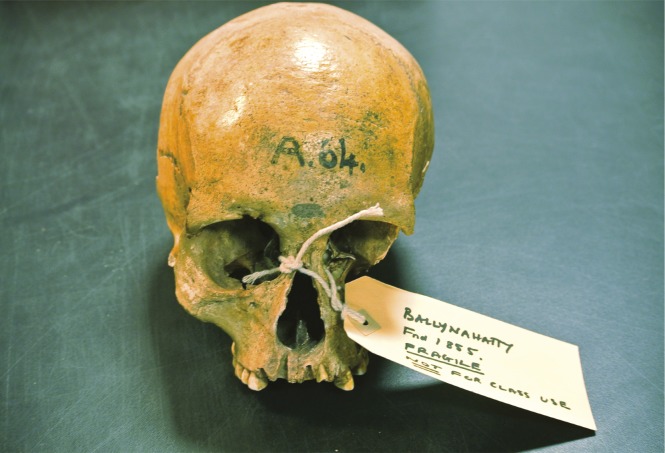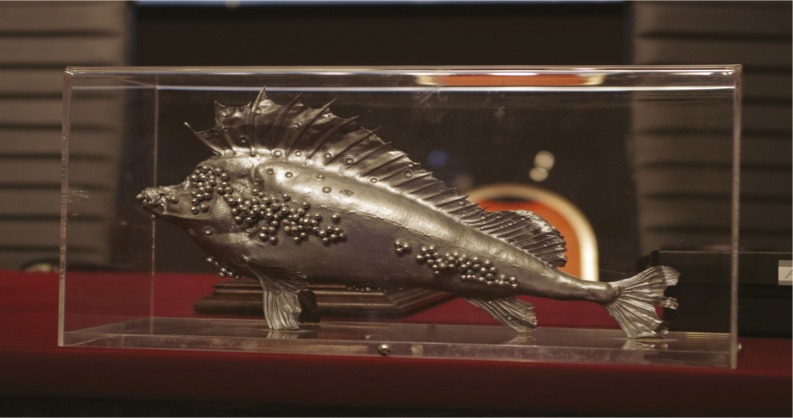Forest water loss during the California drought
Laser-guided imaging spectroscopy helps image forest canopy water content in 3D.
California’s forests provide numerous products and services to the state, such as water provisioning, carbon storage, timber, and ecotourism. However, the 2012–2015 drought, combined with high air temperatures and insect infestations, poses a threat to long-term forest health. Gregory Asner et al. (pp. E249–E255) combined airborne laser-guided spectroscopy with satellite data to model the canopy water content (CWC) of all California forests in August 2015 and to estimate changes in CWC from 2011 to 2015. The analysis excluded forests that burned between 2011 and 2015, thereby excluding CWC loss due to fire. Forests in southern California and encircling the Central Valley exhibited the lowest modeled CWC values and the earliest measureable CWC loss, between 2011 and 2013. Subsequent water loss occurred in foothill forests, later spreading to higher elevations. The authors estimated that 10.6 million hectares of forest, containing up to 888 million large trees, underwent measurable CWC loss between 2011 and 2015. One million hectares, containing up to 58 million large trees, experienced severe CWC loss greater than 30%. According to the authors, the data could support forest management efforts and policy development, and suggest that substantial future forest change might result if drought conditions continue. — B.D.
Genetic shifts mirror onset of Irish farming and metallurgy
Ballynahatty skull, excavated in 1855.
The Neolithic transition, a transformative process marked by the advent of farming, is thought to have arrived in Ireland around 3750 BC, but whether the transition was triggered by waves of immigrant farmers from the Near East or the adoption of agriculture by indigenous Mesolithic people remains unclear. Lara Cassidy et al. (pp. 368–373) explored the unfolding of this and other cultural watersheds through whole-genome analysis of ancient DNA extracted from remains of prehistoric Irish people. Despite displaying traces of hunter–gatherer ancestry, bones of a Neolithic female farmer from a tomb in Ballynahatty, near Belfast, Northern Ireland, dated to 3343–3020 BC, suggest descent from a large outbreeding group of farmers from the Near East, as well as haplotype similarity with modern southern Mediterranean populations. Levels of shared genetic drift suggest farming may have taken a southern coastal route rather than a central European route to reach Ireland. Early Bronze Age bones of three men unearthed at a burial site on Rathlin Island in County Antrim, Northern Ireland, reveal genetic endowment from herders from the Pontic Steppe and haplotype similarity with modern Irish, Scottish, and Welsh people. Genetic variants enriched among present-day Irish, including an allele for an iron retention disorder called hemochromatosis, or Celtic disease, detected in the Rathlin bones suggest that the genotypes can be traced back to the Irish Bronze Age, according to the authors. — P.N.
Assessing impacts of mercury control policy
The mascot of the United Nations Minamata Convention on Mercury negotiations, sculpted by Nicolas Garcia Uriburu.
Estimating the benefits of environmental policies has been historically difficult, due to large uncertainties and knowledge gaps in the processes that toxins such as mercury undergo prior to human exposure. Amanda Giang and Noelle Selin (pp. 286–291) developed an assessment method that accounts for these uncertainties with policy-appropriate assumptions. The authors used this method to project the economic benefits to the United States of policies aimed at controlling mercury pollution. Under a base set of assumptions, the model projected economy-wide benefits from a global policy, the United Nations Minamata Convention on Mercury, of $104 billion by the year 2050 due to increased productivity and wages. The corresponding benefits from a domestic policy, the Mercury and Air Toxics Standards (MATS), were $43 billion. Using a different valuation approach, projected lifetime benefits to individuals born by 2050 due to reduced medical costs, increased lifespans, and increased wages were $339 billion under the Minamata Convention and $147 billion under MATS. Minamata Convention benefits exceeded MATS benefits in multiple projections covering a range of assumptions about atmospheric chemistry, ecosystem time lags, dose–response relationships, and economic value of health effects. However, the model projected MATS benefits to be greater than Minamata Convention benefits for communities that consume primarily fish from local freshwater sources rather than from the global market. — B.D.
Eyewitness identification accuracy
Laboratory-based research using mock witnesses who viewed simulated crimes has raised questions about the accuracy of eyewitness identifications and encouraged changes to administration of photo lineups by police departments. John Wixted et al. (pp. 304–309) examined the accuracy of lineup identifications in a field study using actual eyewitnesses to crimes in Houston, Texas. Earlier experimental studies suggested that presenting lineup photos sequentially is superior to the more traditional simultaneous presentation method, and that witness confidence is, at best, only weakly related to identification accuracy. More recent laboratory-based experimental studies challenge these findings. In the current police department field study, the authors examined 348 actual photo lineups administered in the Houston Police Department in 2013. The authors pseudorandomly assigned lineups to be presented either simultaneously or sequentially by police investigators who were blind to the identity of the suspect. The authors found that simultaneous lineups were superior to sequential lineups and that witness confidence was a strong indicator of the accuracy of identifications. The authors suggest that recent lineup reforms and changes to jury instructions emphasizing the unreliability of eyewitness confidence that were based on earlier research may need to be reevaluated. — B.A.
Long-lasting cocaine-catalyzing enzymes
CocH enzymes (brown and green) fused to the Fc region (blue) of a human IgG antibody.
Although cocaine hydrolase enzymes (CocHs) are able to inactivate cocaine without impairing CNS functions, their half-life within the body is short, limiting the potential use of such enzymes in treating cocaine addiction. Because human IgG antibodies have a longer biological half-life than CocHs, Xiabin Chen et al. (pp. 422–427) fused two CocHs to the fragment crystallizable (Fc) region of an IgG antibody. The authors report that the fused CocH-Fc has a half-life of around 107 hours in rats, compared with less than 8 hours for CocH alone. The authors also found that a single dose of CocH-Fc treatment protected rats against repeated challenges with lethal doses of cocaine. By rapidly breaking down cocaine metabolites for an extended period, CocH-Fc treatments blocked many of the physiological and toxic effects of cocaine in rats and accelerated cocaine metabolism even after 20 days. Because the half-life of a protein drug is significantly longer in humans than in rats, the long-lasting effects of CocH in rats may be comparable to doses every 2–4 weeks in humans. The results suggest that CocH-Fc may confer long-lasting protection against the toxic and neuropharmacological properties of cocaine without interfering with normal body functions, according to the authors. — P.G.
Identifying kinases that drive metastasis
Metastatic prostate cancer is a fatal disease with few therapeutic options. Although mutationally activated kinases have been successful therapeutic targets for multiple types of cancer, genetic aberrations of kinases are rare in prostate cancer. However, evidence suggests that nonmutated kinases play a role in the development of metastasis. Claire Faltermeier et al. (pp. E172–E181) developed an in vivo screen to identify wild-type kinases that can drive prostate cancer metastasis. Using genomic, transcriptomic, and phosphoproteomic databases, the authors studied 125 candidate kinases. Kinases were overexpressed in a mouse prostate cell line and injected intravenously into immunodeficient mice. Twenty of these kinases caused metastases to develop in mouse lungs. To determine which kinases are capable of driving metastasis in human cells, all 20 kinases were expressed in a nonmalignant human prostate cell line and separately injected into immunodeficient mice. Five kinases, including MERTK, NTRK2, and all three RAF family members, drove the formation of bone and visceral metastases in mice. Histological analysis of tissue from human prostate cancer patients showed enhanced expression of these kinases in metastasis samples. The results suggest that wild-type kinases may be potential therapeutic targets for metastatic prostate cancer, according to the authors. — C.B.






